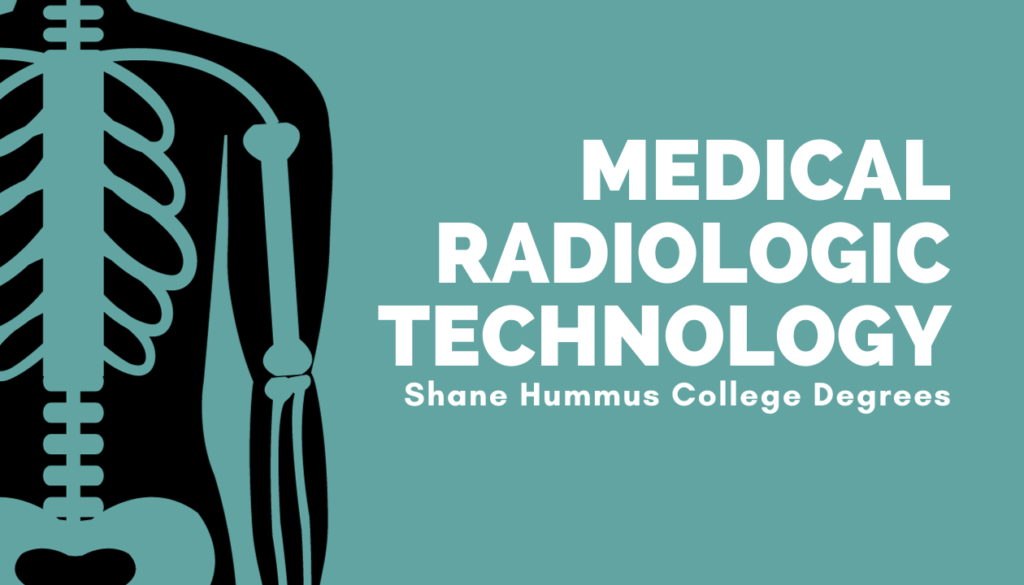Embracing a Medical Radiologic Technology Degree
What exactly is medical radiologic technology? It is a field centered around various imaging modalities like x-ray, CT, MRI, mammography, and sonography. Radiologic technologists are the medical personnel that perform diagnostic imaging exams, produce the images, and assist radiologists in determining a diagnosis.
Pursuing an education in radiologic technology opens up a meaningful career taking images of the human body to uncover injury, disease, and other conditions. Do you find yourself curious about the emerging technologies used to peer inside patients? Does the prospect of helping provide answers appeal to you? If so, the field of medical imaging could be an ideal fit.

Educational Pathways
While a few enter the field with just an on-the-job certification, most pursue a healthcare degree from an accredited program. Two main options exist:
An associate’s degree in radiologic technology takes about two years to complete. These programs blend scientific foundations with hands-on clinical rotations. Does fitting imaging science, pathology, anatomy, patient protocols, and other topics into a shorter timeframe appeal? Then an associate’s degree may work for you.
Other students pursue bachelor’s degrees, taking four years to allow for additional clinical experience. These build on imaging fundamentals with specialized tracks like CT/MRI advanced modalities. Want more clinical hours and specialization? A bachelor’s degree makes sense.
Core courses span imaging physics, radiation biology, anatomy, pathology, patient care, and principles of imaging. How do you feel about blending science and technology fundamentals with patient interaction skills? Radiologic programs merge both critical components.
Medical Radiologic Technology Certification
After graduating from an accredited radiography program, the ARRT radiography exam serves as the gateway into the field. Passing demonstrates expertise in safely operating equipment, properly positioning patients, and applying appropriate judgment. Do standardized exams intimidate you, or do you welcome the chance to prove your knowledge? Certification is a must for launching your career.
Career Opportunities
With your degree in hand and certification complete, what avenues exist to utilize your specialized skills? Hospitals offer abundant openings with their bustling imaging departments and variety of patient cases. Would you prefer a slower pace for diagnosing walk-in patients? Clinics and doctor offices hire radiologic techs as well. How do you feel about discovering injuries in the ER or spotting tumors in an oncology ward? Healthcare offers unique specialties.
As you gain proficiency in standard x-rays, advancing into CT, MRI, sonography, or radiation therapy roles becomes possible. Does delving into the intricacies of how MRI utilizes magnetism and radio waves intrigue you? Do you find yourself wondering exactly how ultrasound sends and receives signals to form fetal images? Curiosity about sub-specialties can take you far.
Job Duties and Responsibilities
The typical workday revolves around operating sophisticated imaging equipment, carefully positioning patients to achieve quality diagnostic images, and reviewing those images for accuracy—all while providing compassionate care.
Here is a glimpse into some core duties:
To start, you will greet patients and explain upcoming procedures to put them at ease while assessing factors like age, health conditions, and mobility level. This allows proper planning to achieve an optimal scan. Do you enjoy both patient interaction to comfort those nervous about exams and solving technical challenges? If so, you will thrive!
You will also skillfully utilize x-ray, CT, MRI, mammography, and fluoroscopy devices, mastering the intricacies of each. This includes coaxing immobile patients into position, manipulating equipment, and determining exposure settings. Technical aptitude combined with creative problem-solving helps master imaging modalities.
Lastly, with the images obtained, you will critique them alongside radiologists to ensure quality standards and protocols are met. Sharpening these visual assessment skills builds the ability to identify anatomical normality vs. abnormality.
Job Outlook and Salary Potential
An aging population needing more diagnostic imaging equates to outstanding job prospects. The field expects to swell 6% over the next decade, per the U.S. Bureau of Labor Statistics. Can you picture an in-demand career helping provide answers to patient concerns? If so, this degree offers security.
With competitive salaries and ample chances to advance, radiologic techs entering the field can expect to earn $72,000+ on average, according to Glassdoor. Placements in large hospitals, high-cost regions, or specialized modalities like MRI can reach over $89,000. Does a stable, rewarding career with the chance to earn over $90k sound enticing to you? If so, this calling could prove lucrative.
Why Pursue a Medical Radiologic Technology Degree
Beyond fascinating technologies and genuine patient relationships, an array of reasons exist for pursuing this life-changing direction, such as:
- Rewarding Patient Interactions: Imagine comforting cancer patients as you capture images to create their treatment plan. Imagine explaining an exam to put a child’s nerves at ease. Connecting with people provides lasting fulfillment.
- Recession-Proof Stability: Healthcare persists despite economic fluctuations. Broken bones still require x-rays in any climate. Can you envision making a difference regardless of markets? If so, this field offers reliable demand.
- Cutting-Edge Modalities: Imaging options expand continually. Advance into echocardiography assessing heart function, vascular sonography mapping blood vessels, radiation therapy tackling tumors, and more! Does being on technology’s leading edge excite you? If so, this arena delivers!
- Security and Satisfaction: With burgeoning openings for certified radiologic technicians over the next decade, you can feel confident embarking on this educational journey, knowing it leads to a gratifying, stable profession.
Ready to Pursue a Medical Radiologic Technology Degree?
Equipped with an overview detailing the requirements, responsibilities, technologies,patient care, and potential of entering the medical imaging field, you now have insight to discern if investing in a radiologic technology degree suits your interests, abilities, and ambitions.
With excellent job prospects on the horizon, competitive salaries to earn, and cutting-edge imaging modes to master, launching an exciting healthcare profession is within reach. One that aligns scientific technology with meaningful patient connections.
So does operating sophisticated equipment to peer within the wonders of the human body resonate with you? Can you envision delivering empathetic, professional care to anxious people seeking diagnoses? Take time to reflect deeply on your motivations. If becoming a foundational pillar of a patient’s healthcare journey ignites passion, then forge fearlessly ahead. An intriguing journey awaits!
If you’re still looking for a different health degree, check out my top 10 health degrees videos here:
Frequently Asked Questions About Medical Radiologic Technology Degree
What does a medical radiologic technologist do day-to-day?
Rad techs operate imaging equipment like x-rays, CTs, and MRIs to produce diagnostic images. Daily tasks involve preparing patients, performing imaging procedures, reviewing images for quality, and following all safety measures.
How long does it take to become a radiologic tech?
Aspiring radiologic technologists pursue either an associate’s degree (2 years) or bachelor’s degree (4 years) that blends classroom foundations with hands-on clinical training in medical facilities.
What other requirements exist beyond the degree programs?
After graduating from an accredited program, radiologic technologists must pass the ARRT national certification exam to demonstrate expertise in safely operating equipment before pursuing state licensure requirements.
What types of work settings employ radiologic technologies?
Hospitals and outpatient imaging centers employ the majority of radiologic technologists, but roles also exist in specialty clinics, doctor offices, and mobile imaging services.
What is the career outlook and earning potential of a radiology tech?
The field expects strong job growth due to an aging population needing more diagnostic imaging. Salaries exceed $72,000 on average, with the potential to earn over $89,000 in hospitals, high-cost regions, or specialized modalities like MRI or CT scan technology.

… [Trackback]
[…] Read More Information here on that Topic: shanehummus.com/college-degrees/radiologic-technology/ […]
… [Trackback]
[…] Find More here on that Topic: shanehummus.com/college-degrees/radiologic-technology/ […]
… [Trackback]
[…] Read More here on that Topic: shanehummus.com/college-degrees/radiologic-technology/ […]
… [Trackback]
[…] Info to that Topic: shanehummus.com/college-degrees/radiologic-technology/ […]
… [Trackback]
[…] Find More here on that Topic: shanehummus.com/college-degrees/radiologic-technology/ […]
… [Trackback]
[…] There you will find 64659 additional Info to that Topic: shanehummus.com/college-degrees/radiologic-technology/ […]
… [Trackback]
[…] There you can find 14851 additional Information on that Topic: shanehummus.com/college-degrees/radiologic-technology/ […]
… [Trackback]
[…] Here you can find 25082 more Info on that Topic: shanehummus.com/college-degrees/radiologic-technology/ […]
… [Trackback]
[…] Read More Info here on that Topic: shanehummus.com/college-degrees/radiologic-technology/ […]
… [Trackback]
[…] Information on that Topic: shanehummus.com/college-degrees/radiologic-technology/ […]
… [Trackback]
[…] Read More on on that Topic: shanehummus.com/college-degrees/radiologic-technology/ […]
… [Trackback]
[…] Read More on on that Topic: shanehummus.com/college-degrees/radiologic-technology/ […]
… [Trackback]
[…] Find More to that Topic: shanehummus.com/college-degrees/radiologic-technology/ […]
… [Trackback]
[…] There you will find 43217 additional Info to that Topic: shanehummus.com/college-degrees/radiologic-technology/ […]
… [Trackback]
[…] Read More on to that Topic: shanehummus.com/college-degrees/radiologic-technology/ […]
… [Trackback]
[…] Find More on on that Topic: shanehummus.com/college-degrees/radiologic-technology/ […]
… [Trackback]
[…] Find More here to that Topic: shanehummus.com/college-degrees/radiologic-technology/ […]
… [Trackback]
[…] Find More to that Topic: shanehummus.com/college-degrees/radiologic-technology/ […]
… [Trackback]
[…] Read More on to that Topic: shanehummus.com/college-degrees/radiologic-technology/ […]
… [Trackback]
[…] Information on that Topic: shanehummus.com/college-degrees/radiologic-technology/ […]
… [Trackback]
[…] Find More Information here on that Topic: shanehummus.com/college-degrees/radiologic-technology/ […]
… [Trackback]
[…] Read More on that Topic: shanehummus.com/college-degrees/radiologic-technology/ […]
… [Trackback]
[…] Read More on that Topic: shanehummus.com/college-degrees/radiologic-technology/ […]
… [Trackback]
[…] Information to that Topic: shanehummus.com/college-degrees/radiologic-technology/ […]
… [Trackback]
[…] Here you will find 72304 more Information to that Topic: shanehummus.com/college-degrees/radiologic-technology/ […]